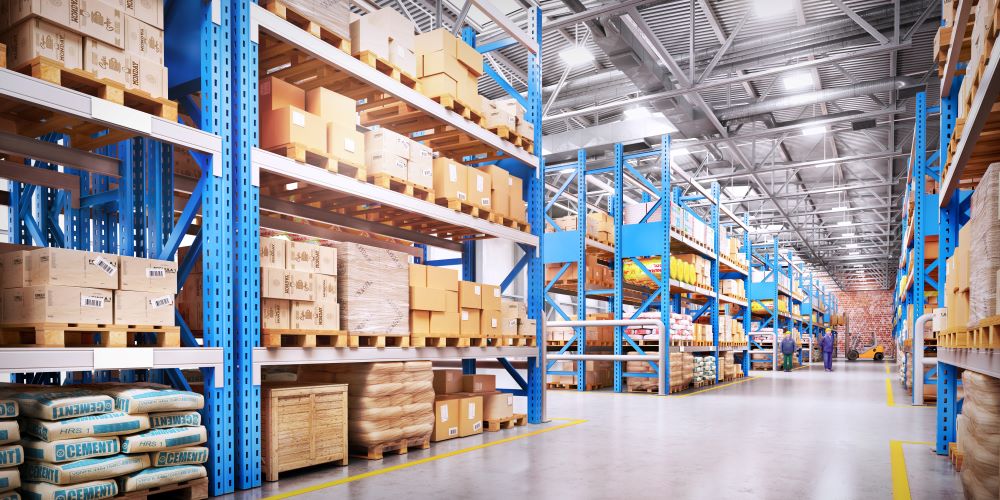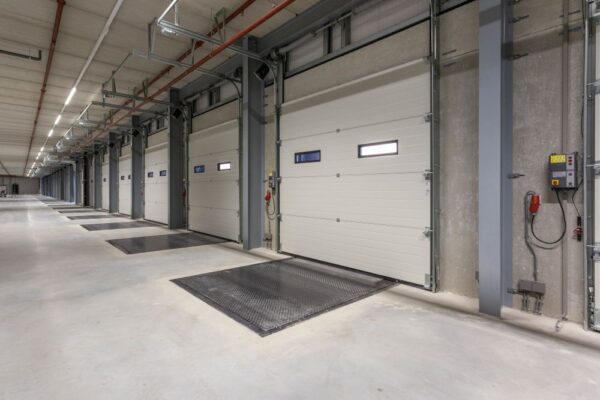Warehouse illumination falls into the category of high-bay lighting. Modern warehouses comprise tens if not hundreds of thousands of square feet of storage space with operations that can continue around the clock. Lighting a modern warehouse requires operators to maximize the efficiency of their operations while minimizing utility bills and operating costs. Energy efficient LED warehouse lights are the best option to accomplish these dual goals.
How Much Does it Cost to Light Up a Warehouse?
Architects and planners often use a default rule that warehouse lighting will cost $1.00 per square foot of warehouse space per year. Thus, the annual electricity bill to light a 100,000 square foot warehouse is expected to be $100,000. This general rule presumes that a warehouse will install traditional high intensity discharge (“HID”) metal halide or high pressure sodium lighting fixtures. Any reduction in this cost will go directly to improve the profitability of the warehouse’s operations, and managers strive to find those reductions anywhere they can.
If the warehouse manager replaced HID fixtures with energy efficient LED lights, the warehouse’s lighting could be lowered by up to 50%. LED warehouse lights create the same or better quality light with less than half the average electrical energy input. Moreover, energy efficient LEDs last 5 to ten times longer than HID warehouse lighting fixtures. These longer lifespans allow warehouse managers to reduce their maintenance and repair costs over the effective life of the lighting system.
Also unlike traditional HID high-bay lighting, energy efficient LEDs come to full illumination almost immediately after they are powered on, without the 15 to 20 minute delays that are typical of the older metal halide or high-pressure sodium technology. A warehouse operator can power up the facility’s lights and operations can begin without delay, thus further improving overall warehouse efficiency.
If portions of a warehouse are not in use, the LED lights in those portions can be dimmed to save even more electricity. High-bay LED lights might require special switches and control systems to manage this feature, but those switches and systems are readily available and can be installed into most existing electrical circuitry plans.
Benefits of Using LED Lighting in Warehouses
LED Lighting for Warehouses are also safer in that they operate at lower physical temperatures than HID warehouse fixtures. A metal halide light that gets scratched or that is subjected to strong mechanical forces can weaken and explode in a catastrophic manner, strewing hot broken glass around a warehouse floor. LED warehouse lights operate at far lower physical temperatures and are substantially less prone to sudden potentially-injury causing breakage. For even greater safety and efficiency, explosion-proof LED lighting fixtures can be installed in warehouse environments that are subject to higher stresses and forces. Warehouse employees may appreciate having fewer absences due to injuries caused by lighting equipment failures.
Warehouses are essential hubs for storage, distribution, and logistics operations. With their vast size and long operating hours, warehouses often consume significant amounts of energy for lighting. However, by adopting energy-efficient LED lighting solutions, warehouse owners can significantly reduce energy consumption, lower costs, and create a well-lit, productive working environment. Here are some of the benefits of energy-efficient LED lights for warehouses and how they contribute to efficiency and savings.
- High Energy Efficiency:
LED lighting technology is renowned for its exceptional energy efficiency. Compared to traditional lighting options like fluorescent or metal halide, LED lights can provide energy savings of up to 50-80%. LEDs convert a higher percentage of electrical energy into visible light, minimizing energy wastage as heat. This efficiency results in lower electricity bills and substantial long-term cost savings for warehouses.
- Long Lifespan and Reduced Maintenance:
LED lights have an impressively long lifespan, typically ranging from 50,000 to 100,000 hours. This longevity far exceeds that of traditional lighting, such as fluorescent tubes or high-intensity discharge lamps. LED lights require less frequent replacements, reducing maintenance costs and minimizing disruptions to warehouse operations. Additionally, the durability of LED lights makes them resistant to shock, vibrations, and temperature fluctuations commonly found in warehouse environments.
- Enhanced Lighting Quality:
LED lights provide high-quality, uniform lighting that enhances visibility and reduces eyestrain for warehouse employees. LED technology offers improved color rendering, allowing workers to accurately identify products, labels, and safety markings. Uniform lighting distribution minimizes shadows and dark spots, ensuring consistent illumination throughout the warehouse and improving safety.
- Instant On/Off and Dimming Capabilities:
LED lights offer instant on/off capabilities, providing immediate illumination with no warm-up time required. This feature is particularly beneficial in warehouses where lighting needs to respond quickly to changes in activity. LED lights can also be easily integrated with dimming controls, allowing for further energy savings by adjusting the lighting intensity based on specific tasks or occupancy levels.
- Motion Sensor Integration:
Installing motion sensors alongside LED lights in warehouses can optimize energy usage by automatically turning off lights in unoccupied areas. Motion sensors detect movement and activate the lights when needed, ensuring energy is only consumed when required. This feature is especially useful in warehouse aisles, where activity may be sporadic throughout the day.
- Smart Lighting Solutions:
Integrating LED lights with smart lighting systems can further enhance energy efficiency in warehouses. Smart lighting solutions utilize advanced controls, sensors, and algorithms to optimize lighting based on real-time conditions, occupancy levels, or natural light availability. These systems can automatically adjust lighting levels, schedule on/off times, and provide data analytics for energy monitoring and optimization.
- Environmental Sustainability:
Adopting energy-efficient LED lighting aligns with sustainability goals and reduces the warehouse’s environmental impact. LED lights are mercury-free and do not emit harmful UV radiation, making them safer for employees and the environment. By reducing energy consumption and greenhouse gas emissions, warehouses contribute to a greener future while enhancing operational efficiency.
Energy-efficient LED lights offer a range of benefits for warehouses, including significant energy savings, improved lighting quality, reduced maintenance costs, and enhanced environmental sustainability. By upgrading to LED lighting solutions, warehouse owners can create a well-lit, productive working environment while enjoying long-term cost savings and a reduced carbon footprint. When considering LED lighting options, it is important to assess specific warehouse requirements, such as lighting levels, motion sensor integration, and the potential for smart lighting systems. With the right LED lighting strategy in place, warehouses can maximize efficiency, optimize lighting conditions, and make significant strides towards energy-efficient operations.
Retrofit kits are available to install energy efficient LED warehouse lights into existing fixtures. Alternately, full fixture LED replacement fixtures and linear LED warehouse aisle fixtures are also available for lighting plans that are designed for new warehouses, or that will effect a wholesale replacement of an older warehouse’s traditional lighting.








